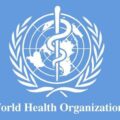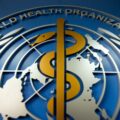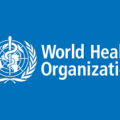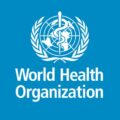The World Health Organization defines adverse drug reaction as a response to a drug that is noxious and unintended, and which occurs at doses normally used in man for the prophylaxis, diagnosis, or therapy of disease, or for the modifications of physiological function.
In the general medical and pharmacological fields, adverse drug reaction denotes a toxic physical or (less commonly) psychological reaction to a therapeutic agent. The reaction may be predictable, allergic, or idiosyncratic (unpredictable). In the context of substance use, the term includes unpleasant psychological or physical reactions to drug taking. See also: Bad Trip
There are several terms commonly used to describe adverse effects of drug therapy:
- An adverse drug reaction (ADR) is an unwanted or harmful reaction experienced following the administration of a drug or combination of drugs under normal conditions of use and is suspected to be related to the drug. An ADR will usually require the drug to be discontinued or the dose reduced.
- An adverse event is harm that occurs while a patient is taking a drug, irrespective of whether the drug is suspected to be the cause.
- A side-effect is any effect caused by a drug other than the intended therapeutic effect, whether beneficial, neutral or harmful. The term ‘side-effect’ is often used interchangeably with ‘ADR’ although the former usually implies an effect that is less harmful, predictable, and may not even require discontinuation of therapy (e.g. ankle edema with vasodilators).
- Drug toxicity describes adverse effects of a drug that occur because the dose or plasma concentration has risen above the therapeutic range, either unintentionally or intentionally (drug overdose).
- Drug abuse is the misuse of recreational or therapeutic drugs that may lead to addiction or dependence, serious physiological injury (such as damage to kidneys, liver, heart), psychological harm (abnormal behavior patterns, hallucinations, memory loss), or death.
Classification of Adverse drug reactions
Adverse drug reactions were originally classified into two subtypes.
Type A Adverse drug reactions: are dose-dependent and predictable; they are augmentations of known pharmacologic effects of the drug, such as orthostatic hypotension with antihypertensive medications.
Type B Adverse drug reactions: are uncommon and unpredictable, depending on the known pharmacology of the drug; they are independent of dose and affect a small population, suggesting that individual patient host factors are important. Hypersensitivity (allergic) reactions to drugs are examples of type B ADRs.
Type A reactions were later called augmented, and type B reactions, bizarre. Two further types of reactions were eventually added: chronic reactions, which relates to both dose and time (type C), and delayed reactions (type D). Withdrawal later became the fifth category (type E), and most recently, unexpected failure of therapy became the sixth (type F).
About 80% of ADRs in the hospital setting or causing admission to a hospital are type A These ADRs are potentially avoidable and often predictable. The drug classes most commonly responsible for ADRs in adults are adrenal corticosteroids, antibiotics, anticoagulants, antineoplastic and immunosuppressive drugs, cardiovascular drugs, nonsteroidal anti-inflammatory drugs, and opiates. For children, the most prevalent drug classes for ADRs are anti-infective drugs, respiratory drugs, and vaccines. Identification of ADRs In both the inpatient and outpatient setting, a patient’s new or worsening symptoms may be the first sign of an ADR.
In a community pharmacy, patients often seek advice from the pharmacist to treat various symptoms at home. This can be an opportunity for the pharmacist to inquire about the patient’s symptoms to determine whether they might have been caused by an ADR. For example, if a patient asks the pharmacist for a recommendation to treat diarrhea, the pharmacist could inquire about other medications the patient is taking to determine whether diarrhea is a known ADR associated with the drug therapy, such as with antibiotics. An over-the-counter (OTC) medication may not be needed, and the diarrhea may resolve on completion of the antibiotic therapy. In the inpatient setting, patients may tell their nurse or physician about the new symptom they are having, which may result in a telephone call to the pharmacist.
Asking detailed questions about the patient’s symptoms, rather than immediately providing a treatment recommendation, could uncover an ADR and prevent unnecessary drug therapy or further ADR symptoms. Noticing that an atypical laboratory or diagnostic procedure has been ordered may indicate that an ADR has occurred. Common laboratory tests can also assist in identifying an ADR. A new order for a serum drug level may alert the practitioner to investigate whether an ADR caused by drug toxicity or treatment failure is occurring. Laboratory monitoring can help determine improvement or decline after a change in therapy. Laboratory values can also establish baseline organ function and help confirm or rule out alternative diagnoses. When initiating a new drug therapy, it may be helpful to obtain baseline laboratory values in anticipation of an ADR. For example, baseline liver function tests are obtained before initiating therapy with a statin in anticipation that the therapy may cause an increase in these laboratory values, potentially warranting discontinuation.
Abnormalities in laboratory results do not mean that an ADR has definitely occurred, but that the practitioner should take a close look at the patient to assess whether an ADR is a potential culprit. Some less obvious methods of detection stem from medication order screening in both inpatient and outpatient practice. Often, an ADR can be detected by noticing an abrupt, unexpected discontinuation of a drug or a substantial dosage increase or reduction. Orders for new medications may occasionally alert the pharmacist that an ADR has occurred. Medication orders such as naloxone, flumazenil, diphenhydramine, antiemetics, vitamin K, sodium polystyrene sulfonate, corticosteroids, or antidiarrheals may be a sign that a practitioner is treating an ADR.
Another way to identify an ADR is by reading the daily multidisciplinary notes in a patient’s chart. Notes pertaining to oversedation, lethargy, and falls may be the sign of an ADR caused by an analgesic, a sedative, or a muscle relaxant. Reports of a rash in a patient’s progress notes may be indicative of an ADR and should be investigated for a drug-related cause, such as an allergic reaction or yeast infection caused by the overuse of antibiotics.
Some electronic medical record systems can compile reports for predetermined threshold changes in laboratory values. For example, if the health system determines that an increase or decrease in serum potassium values of 1 mEq/L in a 24-hour period is significant, a patient whose serum potassium falls from 4 mEq/L to 3 mEq/L will be included in the report. The pharmacist or other health care provider can then examine the medication profile to determine whether the drop in the potassium occurred because of an ADR (e.g., a diuretic in this case). Often, when an ADR occurs, a patient may require transfer to a higher level of care, such as from a general surgery ward to an intensive care unit. If an unexpected change in a patient’s clinical condition warrants transfer to a higher level of care, ADRs should always be included in the differential.
Pharmacists should assess each medication that has been administered to the patient to identify whether an ADR could have occurred. Although several triggers aid in identifying potential ADRs, determining whether a patient’s symptoms or abnormal laboratory results are caused by a medication or by another underlying condition can be difficult. A causality assessment, performed for each potential ADR, can help determine future drug therapy options.





